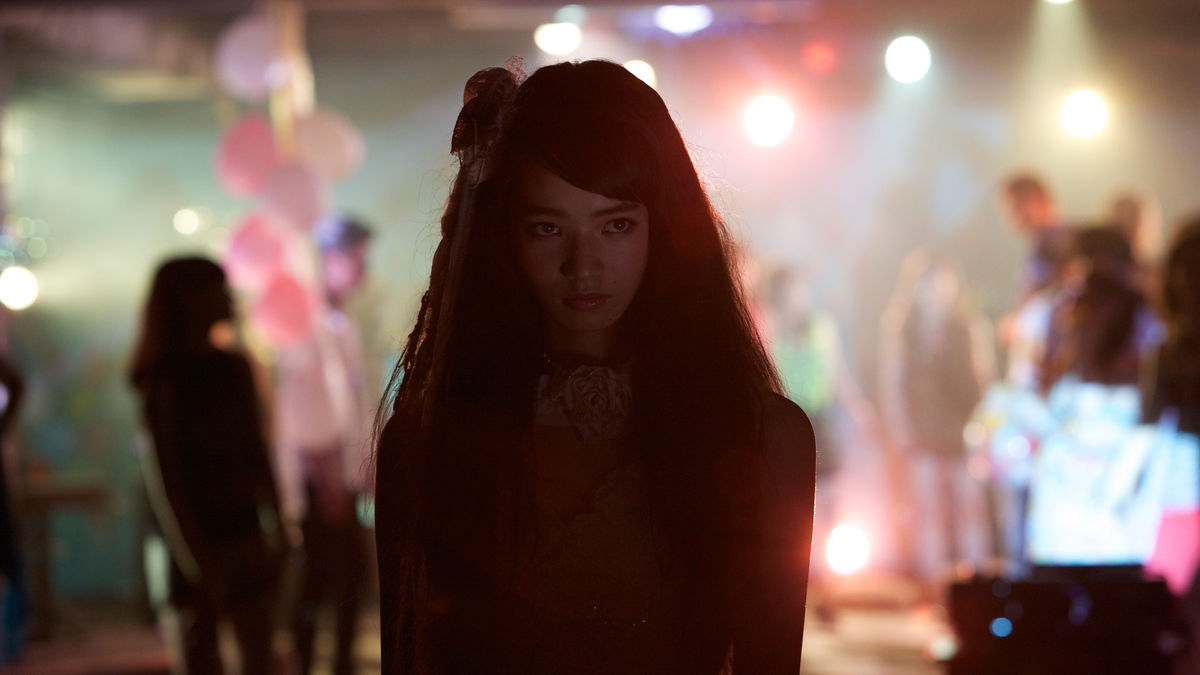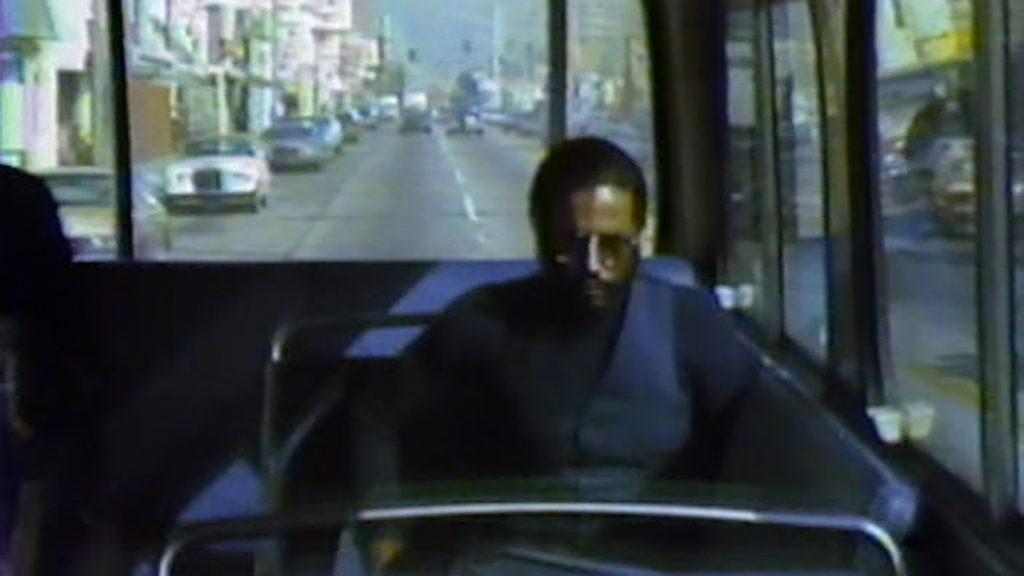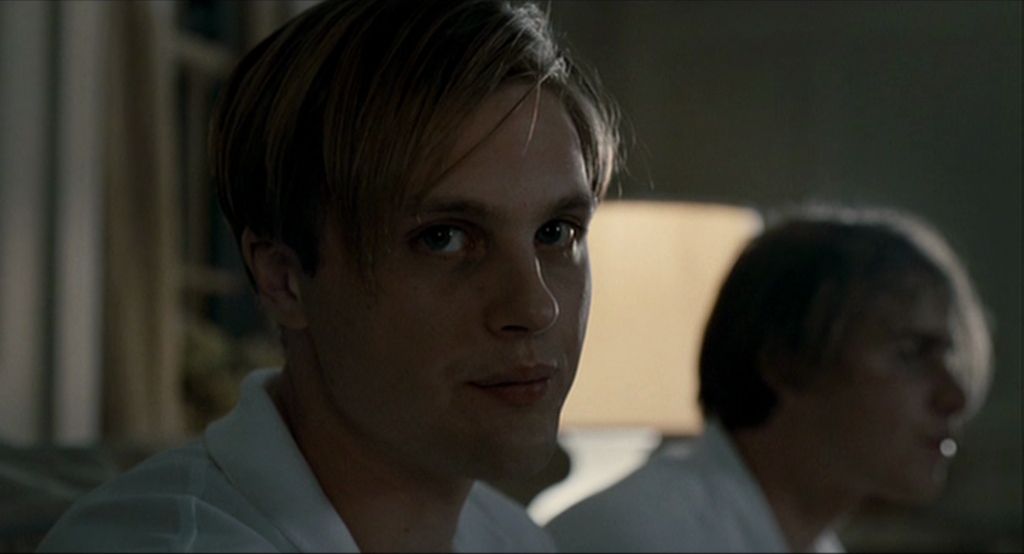
Our partner organization, Films from the Margin, operates to put on display a showcasing of films “from the margin,” often works that are difficult to find, lesser known, and considered hidden gems. From world famous filmmakers’ smaller, maybe earlier work to a surprising foreign marvel, Films from the Margin aspires to educate and inform viewers of cinematic treasures otherwise hidden by an immeasurable sea of content, while providing hours of gutsy, unique, unforgettable entertainment. This column will feature recommendations of films otherwise considered to be “from the margin,” as well as where one can locate them. For more information on Films from the Margin and how to get involved, drop us a line at filmsfromthemargin.ec@gmail.com.

The World of Kanako (2014, Tetsuya Nakashima, Japan)
The apple doesn’t fall far from the tree in The World of Kanako, a sickeningly dark entry into modern Japanese cinema. The disturbed father-daughter connection of Twin Peaks: Fire Walk With Me meets the grimy crime thrill of Oldboy with the editing of an action blockbuster and layered, dark performances to create this nauseating, intense, and shocking film. Akikazu (Koji Yakusho) leans back into his detective past when he finds out his daughter, Kanako (Nana Komatsu) has gone missing. He acts violent and threatening in his investigation, knowing his daughter and ex-wife have been removed from his life due to this behavior. As he investigates further, his understanding of his daughter’s life becomes more muddled; she is more similar to him than he realizes, yet her life is so far removed from him. It’s an unrelentingly dark story, a feel-bad film by all means, yet a phenomenal piece of storytelling, revealing the disturbing behaviors beneath those we are closest to, and the ones that are hereditary. – Karenna Umscheid
The World of Kanako is available to stream on Hulu, Pluto TV, The Roku Channel, and Amazon Prime Video. It is also available to rent on Apple TV and VUDU.

In Order Not to Be Here (2002, Deborah Stratman, USA)
A surrealist vision of the suburbs. After the sun goes down the police come out for their nightly escapades. They monitor the streets scouring for figures lost in the dark, stalking as if they were hunters. Like owls they fly high in the sky using night vision making them fully aware of their prey. Deborah Stratman films what is not there, what is not seen under the glaring heat of the sun. Her static shots portray a stillness in the air that is not felt at any other time. In pure darkness, shopping mall parking lots begin to illuminate neighborhoods. Car headlights blanket streets creating an artificial sun. Stratman’s message is told out of fear of who crawls along these asphalt roads. The local fast food restaurant is not only the fluorescent night light to keep small town corporatism alive but also a small haven for the blue-clothed night owls who prowl the sidewalks. Every night, suburbanites go to sleep not fully aware of what happens just outside their window. Stratman’s 16mm depiction of the horrors of the sprawling subdivisions, the flickering streetlights, the open-late McDonald’s tells the tale of who controls the night. – Aidan Collins
In Order Not to Be Here is available on YouTube.

Two Zone Transfer (1979, Ulysses Jenkins, USA)
From LA-based artist and filmmaker Ulysses Jenkins, Two Zone Transfer is a surrealist short film that chronicles the depiction of Black people in American pop culture. Taking place mostly in a man’s dream, a critical and biting perspective on black representation throughout western history is formed, connecting the gross caricature of early black face performances to mid-twentieth-century James Brown concerts. Jenkins employs a bold confrontational style rife with iris shots, creative staging, and fluid editing that embodies a revelatory sense in how the ideas and themes are presented. The film feels like a mix between an educational children’s cartoon (think the playful relaying of information in Schoolhouse Rock) with a more politically and socially aware avant-garde work, becoming an introduction to the nightmarish reality Black people face in a racist society. A montage bridging multiple historical periods and perspectives, Two Zone Transfer exhibits Jenkins’s unique and bold approach to understanding identity in the film medium. – Julian Hart
Two Zone Transfer is available to stream on the Criterion Channel. Jenkins also currently has a retrospective on his 40-year career playing at the Hammer Museum in Los Angeles, ending on May 15.

Funny Games (2007, Michael Haneke, USA)
Funny Games is a shot-for-shot remake of an Austrian 1997 film of the same name. Though most film remakes are done by different studios, this remake was done by the same writer-director, Michael Haneke. In seeing the films, one gets the sense that Haneke decided to remake the film not because of a particular artistic desire, but to inflict his brutal experiment of a film on an American audience. Funny Games is ceaselessly brutal, a home-invasion film stripped of the typical restrictions and trappings that Hollywood uses to sanitize and make marketable what would be an otherwise untenably disturbing genre. It can be appreciated in the sheer, gripping horror of the events depicted, or for its meta-narrative and commentary on media violence in general. While divisive and certainly not for everyone, it is an irrefutably unique and unforgettable ride. – Max Zlochiver
Funny Games is available to stream on Kanopy. It is also available to rent on Apple TV, Amazon Prime Video, Google Play, Youtube, VUDU, the Microsoft Store, redbox, and Direct TV.

We’re All Going to the World’s Fair (2022, Jane Schoenbrun, USA)
We’re All Going to the World’s Fair is an honest and unfiltered portrait of finding the truth in liminality. Jane Schoenbrun’s horror/coming of age directorial debut is the ultimate synthesis of modern internet ghost stories, portraying loneliness in an increasingly vast yet isolating digital landscape. The film is a wholly personal reflection on gender dysphoria, showcasing an online personality transforming as a means of expression and identity until an aching crescendo. Schoenbrun plays with internet horror/creepypasta iconography to a T, making for a wholly sincere film of cloudy profiles and footage that feels like a cry for help from one’s past self. Experiencing this film as part of the generation it is by and for feels like taking a time machine back to former online fears and insecurities, and it is one of the most terrifyingly tragic yet cathartic films I’ve ever seen. – Justin Landsman
We’re All Going to the World’s Fair is now playing in theaters nationwide. It is available to rent/buy on Apple TV, Amazon Prime Video, VUDU, Microsoft, and redbox. It is also available to rent on Spectrum.